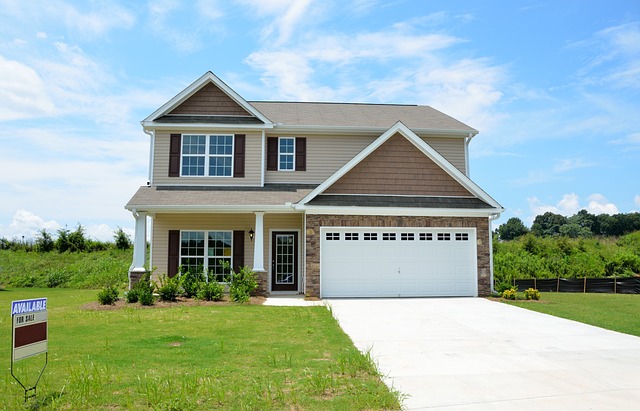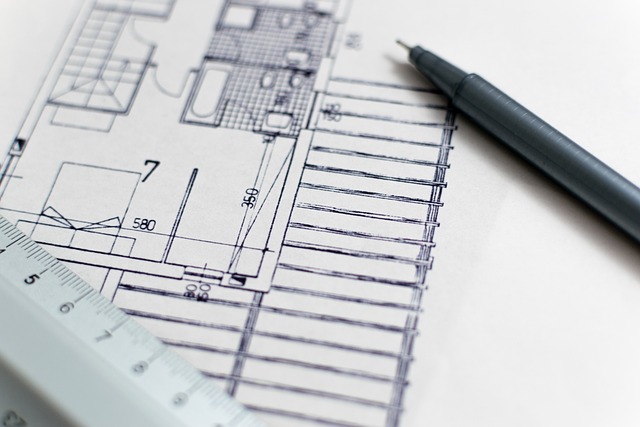Trends in New Home Construction and Their Implications
Exploring the latest trends in new home construction, this article delves into how these shifts are shaping the future of housing, from sustainable practices to smart technology integration, and their implications for homeowners, builders, and communities.
New home construction is undergoing a significant transformation, reflecting shifts in lifestyle, technology, and environmental awareness. The trends we’re seeing in today’s housing market point to broader changes in how homes are designed, built, and lived in. For anyone interested in the future of real estate or considering building a new home, understanding these trends can be crucial.

1. Sustainability and Eco-Friendly Building
As climate change continues to dominate public conversation, eco-conscious home construction has surged in popularity. Homebuyers today are looking for houses that minimize environmental impact, reduce energy consumption, and promote a sustainable lifestyle. Builders and architects are responding with innovative materials and designs focused on sustainability.
Green building certifications, such as LEED (Leadership in Energy and Environmental Design), have become desirable features, as they assure buyers of a home’s eco-friendly credentials. Homes are increasingly being constructed with energy-efficient insulation, solar panels, and smart thermostats. Features like rainwater harvesting, native landscaping, and geothermal heating systems are becoming more common, reducing reliance on non-renewable energy and conserving resources.
For many new homeowners, eco-friendly designs also mean long-term cost savings. Although the upfront cost for sustainable materials and technologies may be higher, the energy efficiency often translates into reduced utility bills over time. This dual benefit of environmental stewardship and cost savings makes sustainable homes highly appealing.
2. Smart Technology Integration
Smart homes have moved from futuristic dreams to tangible reality, with technology now deeply woven into modern home construction. Today’s new builds often feature smart systems that improve convenience, security, and energy efficiency. Builders are pre-installing systems that allow homeowners to control lighting, security cameras, climate, and even kitchen appliances through smartphone apps or voice commands.
Voice-activated assistants like Amazon Alexa and Google Assistant are popular inclusions, giving residents seamless control over home functions. Enhanced security systems, from doorbell cameras to smart locks, add layers of protection that older home models typically lack. Moreover, integrated smart thermostats and lighting systems can learn household routines to save energy, turning off lights or adjusting temperatures automatically.
While tech integration undoubtedly adds comfort, it also caters to the modern homeowner’s desire for connectivity. The increased adoption of work-from-home arrangements has also played a role, with many builders now including Wi-Fi and smart tech as essential infrastructure. Beyond comfort, smart homes hold value for buyers who see technology as a future-proof investment that enhances property value.

3. Focus on Health and Wellness Features
Since the COVID-19 pandemic, there’s been a stronger focus on health and wellness in home design. Builders and designers are placing a greater emphasis on air quality, lighting, and noise control to create spaces that promote well-being. Air filtration systems, for instance, are a frequent addition, particularly in areas prone to air pollution. Natural lighting and ventilation are also prioritized, and architects are increasingly designing homes with large windows, open spaces, and layouts that maximize daylight.
Biophilic design, which emphasizes a connection with nature, is another trend gaining traction. This approach includes incorporating indoor plants, using natural materials, and creating outdoor spaces that flow seamlessly into indoor areas. For buyers, these design elements create a calming, rejuvenating environment and reflect a deeper appreciation for mental and physical well-being.
Together, these features indicate a shift in the home-building industry towards wellness-focused design principles. Builders are recognizing that homes are not just places to live but sanctuaries where people want to feel safe, healthy, and connected to nature.
4. Flexible, Multi-Functional Spaces
The traditional layout of separate rooms for distinct purposes is evolving. In response to lifestyle changes, especially the rise of remote work, many new homes are designed with flexible spaces that can adapt to different needs. Home offices, once a luxury, have become a necessity, and builders are incorporating them as a staple feature.
Some homes feature rooms that can serve multiple purposes depending on the household's needs: a guest room might double as an office, or a family room may serve as a play area, fitness room, or theater. Movable partitions, modular furniture, and convertible spaces allow homeowners to easily adapt their homes as circumstances change.
For growing families or those planning to stay in a single home long-term, flexibility is a significant asset. A space that can transform over time appeals to buyers who want their homes to evolve with them, whether for work-from-home needs, growing children, or changing lifestyles.
5. Minimalistic and Functional Design Aesthetics

The modern aesthetic in home design leans towards minimalism and functionality, prioritizing clean lines, open spaces, and simplicity. More than just a style choice, this trend reflects a shift in lifestyle where homeowners value quality over quantity. The idea of "less is more" appeals to people seeking uncluttered spaces that feel light, open, and organized.
Minimalist design also goes hand-in-hand with sustainability, as it often means using fewer materials and focusing on natural, durable, and eco-friendly options. For instance, reclaimed wood, stone, and other organic materials not only contribute to a sleek look but also align with sustainable living values. Similarly, energy-efficient appliances and fixtures are standard features in these homes, as they blend aesthetics with practicality.
The result is a design trend that appeals to a wide range of buyers, especially those looking to simplify and focus on what matters most in their living environment. These homes prioritize high-quality materials, craftsmanship, and thoughtful layouts that create an enduring, stylish space.
6. Urbanization and the Rise of Smaller Homes
In urban areas, where space is limited and demand is high, there is a trend towards smaller, more compact homes. The tiny home movement has captured public interest, promoting a lifestyle centered around efficiency and a smaller environmental footprint. Although tiny homes are not for everyone, their popularity has influenced broader trends in urban home construction.
Many urban new builds now focus on maximizing space in smaller footprints, making use of smart storage solutions and efficient design. Compact homes are equipped with features like built-in storage, multifunctional furniture, and open-plan layouts that make small spaces feel spacious. Additionally, vertical building, with townhomes and multi-story apartments, is on the rise, providing solutions for density without compromising livability.
For young professionals and city dwellers, these smaller, well-designed homes offer affordability and convenience. By using space effectively and focusing on quality, urban homes cater to those who prioritize location and lifestyle over square footage. This trend reflects the broader housing market shift towards efficient use of space and minimalistic living, balancing affordability with desirable urban living.
In conclusion, the trends in new home construction reflect a transformation driven by sustainability, technology, health, and adaptability. Builders are increasingly aligning with buyers’ evolving priorities, creating homes that are not only eco-friendly but also integrated with smart technology, designed for wellness, and flexible enough to meet changing needs. Whether driven by environmental concerns, the appeal of a minimalist lifestyle, or the practicality of compact urban living, these trends signify a shift towards homes that support a modern, connected, and conscientious way of life.

